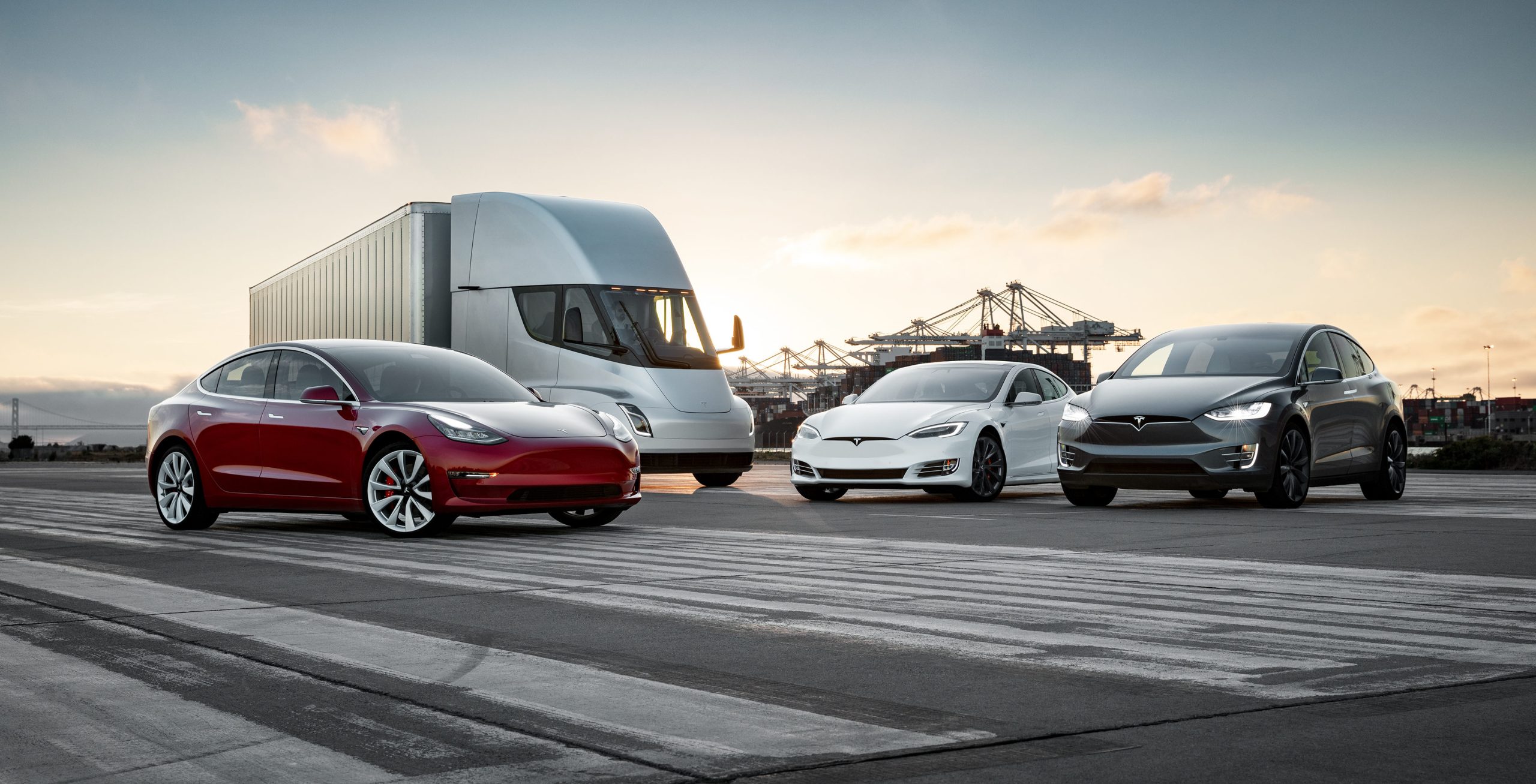
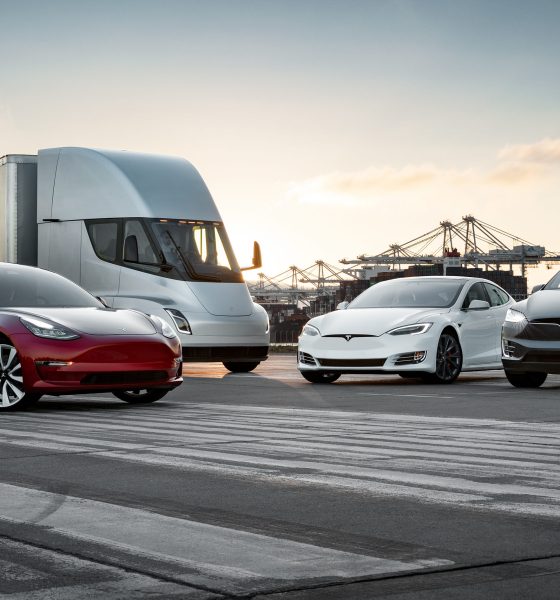
News
Tesla Effect: Expert dives into EV adoption and the internal combustion engine’s death
When Elon Musk took the helm as CEO of Tesla, he aimed to disrupt the transportation industry to such a degree that electric mobility becomes the preferred, primary form of transportation. It was a lofty goal, near-impossible at the time. Yet, more than a decade and several all-electric vehicles later, Musk’s dream and his all-too-familiar Master Plan are actually happening.
Spurred by the success and the demand generated by vehicles like the Tesla Model S and Model 3, the auto industry is shifting towards electric transportation. Coupled with the ongoing climate emergency, several regions across the globe are also looking to drastically reduce their emissions, and one of the ways they are doing that is by phasing out the internal combustion engine. Paul Eichenberg, managing director of Paul Eichenberg Strategic Consulting and a longtime veteran in the auto industry, discussed these shifts in a recent appearance at Autoline After Hours.
During his discussions, Eichenberg noted that the auto industry, including the companies comprising its large supply chain, is already undergoing a steady departure from ICE technology. Aggressive emissions targets in regions such as Europe and China will eventually make it impossible for gas and diesel-powered vehicles to comply unless they become electric. Technological advancements such as autonomous driving solutions are also becoming a priority. This could be seen in how massive companies such as Volkswagen and Ford are currently partnering in a push towards EVs and full self-driving technology. Eichenberg noted that there would likely be more high-profile collaborations in the near future.
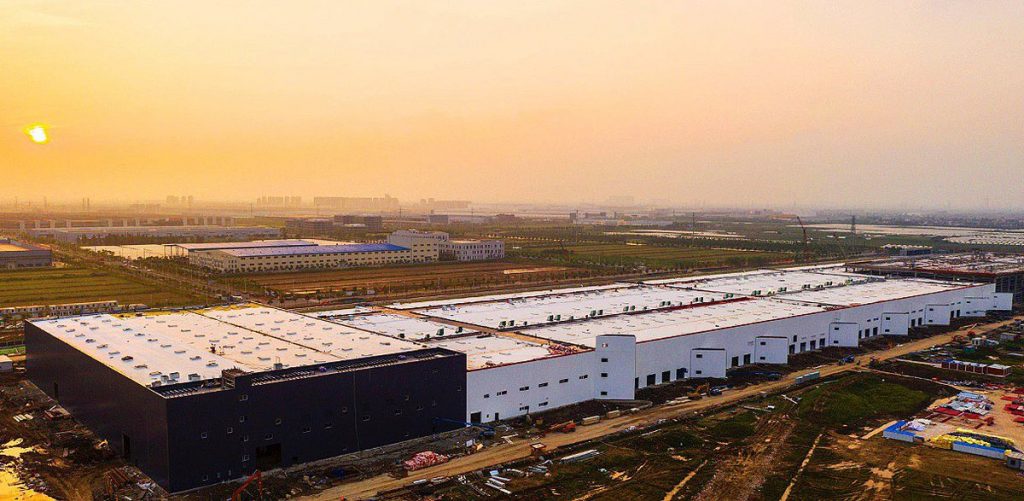
It is at this point that Tesla’s disruption, the “Tesla Effect,” if you may, becomes incredibly evident. Tesla might still be learning the ropes when it comes to running a car business, but it is becoming undeniable that the company has created an objectively superior product. Sandy Munro, who has torn down the Tesla Model 3 and other EVs like the Chevy Bolt and the BMW i3, remarked that Tesla’s electric sedan is at least a generation ahead of what other companies have put on the road in terms of the architecture, the electronic systems, and the software surrounding the vehicle. Tesla still needs to figure out a consistent way to make money, but in terms of the electric cars themselves, the company seems to have everything figured out.
With traditional auto catching up to upstart companies like Tesla, large carmakers are now looking to leverage the innovations from younger, smaller companies. This could be seen in how Ford willingly invested in Rivian, which has developed its own skateboard platform that features much of the same concepts as Tesla’s skateboard chassis. Eichenberg, citing an OEM he spoke with prior to the announcement of Ford’s Rivian investment, stated that building a skateboard similar to Rivian’s and Tesla’s will likely result in a seven-year lead in the marketplace.
With electric cars being far more straightforward in terms of parts and components, a significant number of companies whose businesses rely on the internal combustion engine are currently being faced with a dilemma. Eichenberg gave an example of this in a brief discussion about forgings. “If you look at the forgings, a typical vehicle like the Pacifica — you know, V6, 8-speed — that has 107 forgings in it, in just that traditional ICE engine ecosystem. When you go to an electric vehicle, whether it’s the (BMW) i3, the Teslas, the (Chevy) Bolt, whatever it is, there’s eight or nine. So you have a 90% over-capacitation of an industry. And here’s an industry that’s only 90 billion globally, and half of everything it does is in the engine-transmission ecosystem,” he said.
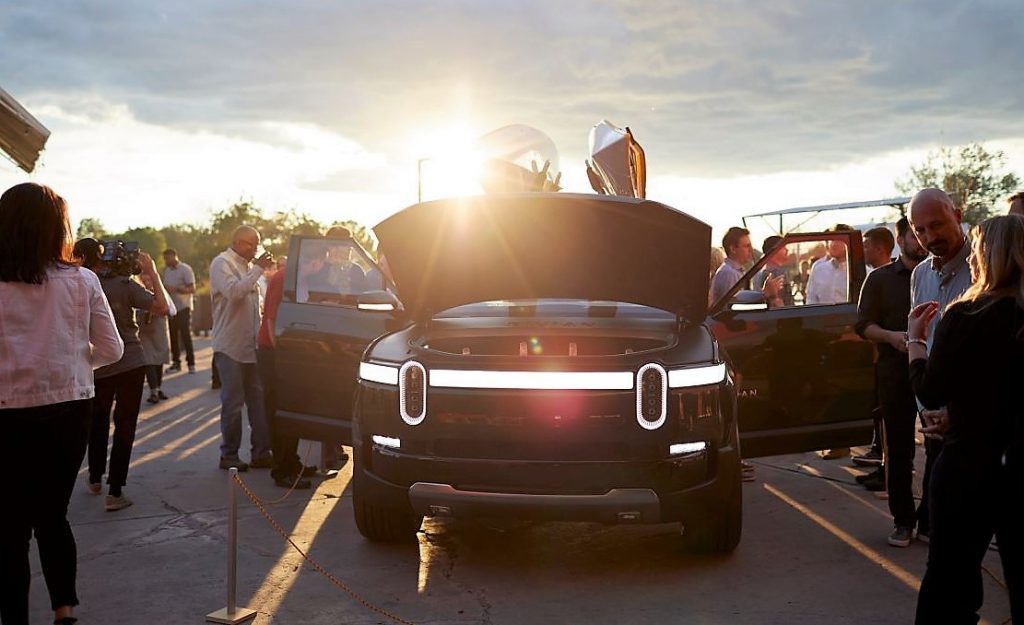
Elaborating further, Eichenberg mentioned that big-tier corporations such as Honeywell and Delphi, whose businesses are tied to the internal combustion engine, are now positioning themselves through spinoffs as a way to shed their ICE-centered assets. Unfortunately, smaller companies don’t have it as easy, particularly as private equities and investors do not seem interested in ICE innovations anymore. Eichenberg shared the story of Dayco, a private equity-owned business which experienced multiple failed sale processes. Eventually, the company ended up taking the deal to China, where it failed to receive a single bid. Among the key reasons behind these failures was Dayco’s line of business.
“Why is Dayco an indication of what private equities are going to do? It’s because Dayco makes pulley systems that go in front of the internal combustion engine. And of course, what’s been the first element to be electrified? All the pumps and all these systems that run off this pulley system. So, the market has already recognized, ‘Hey you know what, we’re not interested in these types of assets,’” he said.
Overall, it appears that traditional automakers’ decision to “wait and see” if Tesla survives and succeeds was a miscalculation at best. As it turned out, well-designed, long-range electric cars caught on, and with the advent of the Tesla Model 3 Standard Plus, which currently starts below $40,000 with Autopilot as standard, it is now becoming quite evident just how much catching up is needed for traditional auto to thrive (or even survive) in the age of the electric car. Yet, as more large automakers collaborate on technology that companies like Tesla have developed on their own, and as investments flow into young, innovative companies like Rivian, it is becoming a certainty that the internal combustion engine is indeed on its twilight years.
Watch Paul Eichenberg’s segment in Autoline After Hours in the video below.

News
Tesla removes Safety Monitors, begins fully autonomous Robotaxi testing
This development, in terms of the Robotaxi program, is massive. Tesla has been working incredibly hard to expand its fleet of Robotaxi vehicles to accommodate the considerable demand it has experienced for the platform.
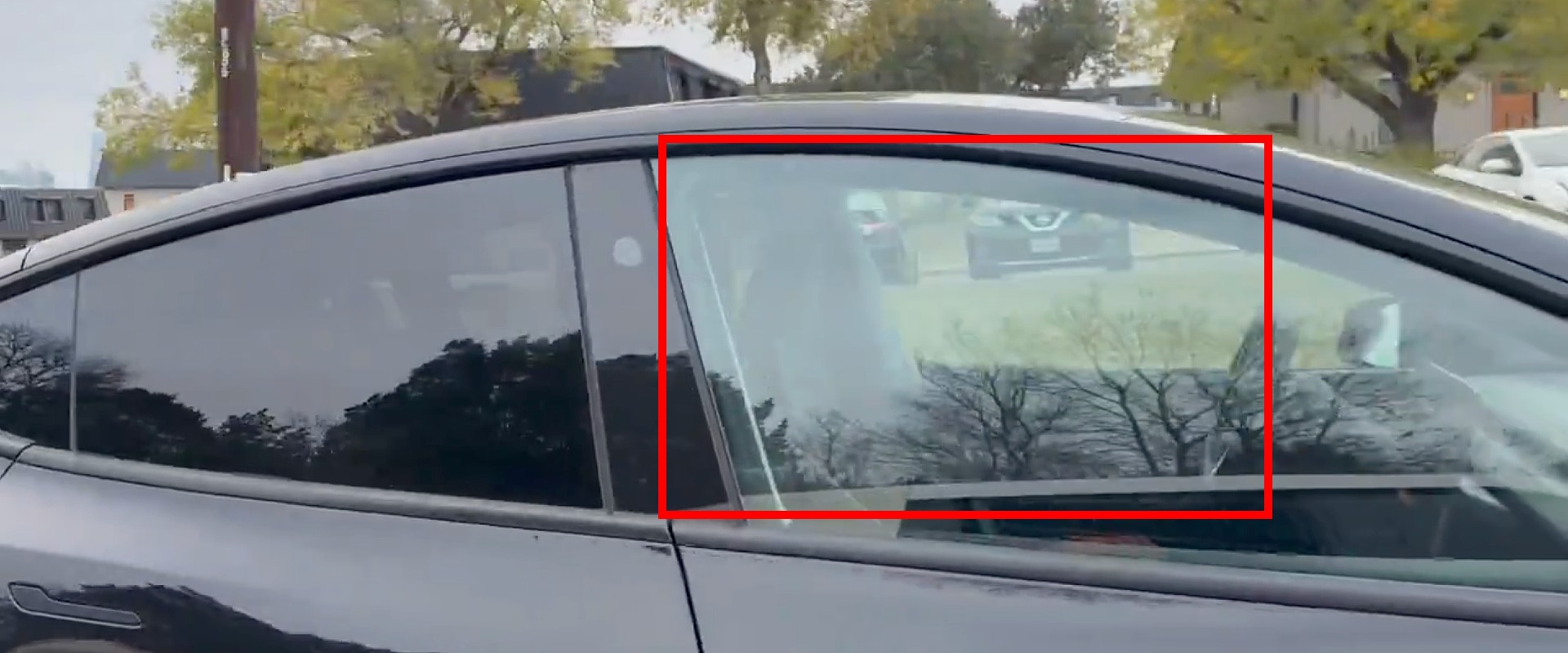
Tesla has started Robotaxi testing in Austin, Texas, without any vehicle occupants, the company’s CEO Elon Musk confirmed on Sunday. Two Tesla Model Y Robotaxi units were spotted in Austin traveling on public roads with nobody in the car.
The testing phase begins just a week after Musk confirmed that Tesla would be removing Safety Monitors from its vehicles “within the next three weeks.” Tesla has been working to initiate driverless rides by the end of the year since the Robotaxi fleet was launched back in June.
Two units were spotted, with the first being seen from the side and clearly showing no human beings inside the cabin of the Model Y Robotaxi:
A Tesla without a driver was spotted traveling on public roads! pic.twitter.com/ZLbduf4cKa
— TESLARATI (@Teslarati) December 14, 2025
Another unit, which is the same color but was confirmed as a different vehicle, was spotted just a few moments later:
NEWS: A second Tesla Model Y Robotaxi running FSD Unsupervised has just been spotted driving itself on public roads in Austin, Texas, with no one in the front seats.
This is a different car from the one spotted earlier. They have different license plates.
h/t @Mandablorian https://t.co/5URYsUGyD0 pic.twitter.com/CIUi4mXi33
— Sawyer Merritt (@SawyerMerritt) December 14, 2025
The two units are traveling in the general vicinity of the South Congress and Dawson neighborhoods of downtown Austin. These are located on the southside of the city.
This development, in terms of the Robotaxi program, is massive. Tesla has been working incredibly hard to expand its fleet of Robotaxi vehicles to accommodate the considerable demand it has experienced for the platform.
However, the main focus of the Robotaxi program since its launch in the Summer was to remove Safety Monitors and initiate completely driverless rides. This effort is close to becoming a reality, and the efforts of the company are coming to fruition.
Testing is underway with no occupants in the car
— Elon Musk (@elonmusk) December 14, 2025
It is a drastic step in the company’s trek for self-driving technology, as it plans to expand it to passenger vehicles in the coming years. Tesla owners have plenty of experience with the Full Self-Driving suite, which is not fully autonomous, but is consistently ranked among the best-performing platforms in the world.
News
Tesla refines Full Self-Driving, latest update impresses where it last came up short
We were able to go out and test it pretty extensively on Saturday, and the changes Tesla made from the previous version were incredibly impressive, especially considering it seemed to excel where it last came up short.

Tesla released Full Self-Driving v14.2.1.25 on Friday night to Early Access Program (EAP) members. It came as a surprise, as it was paired with the release of the Holiday Update.
We were able to go out and test it pretty extensively on Saturday, and the changes Tesla made from the previous version were incredibly impressive, especially considering it seemed to excel where it last came up short.
Tesla supplements Holiday Update by sneaking in new Full Self-Driving version
With Tesla Full Self-Driving v14.2.1, there were some serious regressions. Speed Profiles were overtinkered with, causing some modes to behave in a strange manner. Hurry Mode was the most evident, as it refused to go more than 10 MPH over the speed limit on freeways.
It would routinely hold up traffic at this speed, and flipping it into Mad Max mode was sort of over the top. Hurry is what I use most frequently, and it had become somewhat unusable with v14.2.1.
It seemed as if Speed Profiles should be more associated with both passing and lane-changing frequency. Capping speeds does not help as it can impede the flow of traffic. When FSD travels at the speed of other traffic, it is much more effective and less disruptive.
With v14.2.1.25, there were three noticeable changes that improved its performance significantly: Speed Profile refinements, lane change confidence, and Speed Limit recognition.
🚨 Many of you asked us to test highway driving with Tesla Full Self-Driving v14.2.1.25. Here’s what we noticed:
✅ Speed Profiles are significantly improved. Hurry Mode is no longer capped at 10 MPH over the speed limit, and now travels with the flow of traffic. This is much… pic.twitter.com/48ZCGbW0JO
— TESLARATI (@Teslarati) December 13, 2025
Speed Profile Refinement
Speed Profiles have been significantly improved. Hurry Mode is no longer capped at 10 MPH over the speed limit and now travels with the flow of traffic. This is much more comfortable during highway operation, and I was not required to intervene at any point.
With v14.2.1, I was sometimes assisting it with lane changes, and felt it was in the wrong place at the wrong time more frequently than ever before.
However, this was one of the best-performing FSD versions in recent memory, and I really did not have any complaints on the highway. Speed, maneuvering, lane switching, routing, and aggressiveness were all perfect.
Lane Changes
v14.2.1 had a tendency to be a little more timid when changing lanes, which was sort of frustrating at times. When the car decides to change lanes and turn on its signal, it needs to pull the trigger and change lanes.
It also changed lanes at extremely unnecessary times, which was a real frustration.
There were no issues today on v14.2.1.25; lane changes were super confident, executed at the correct time, and in the correct fashion. It made good decisions on when to get into the right lane when proceeding toward its exit.
It was one of the first times in a while that I did not feel as if I needed to nudge it to change lanes. I was very impressed.
Speed Limit Recognition
So, this is a complex issue. With v14.2.1, there were many times when it would see a Speed Limit sign that was not meant for the car (one catered for tractor trailers, for example) or even a route sign, and it would incorrectly adjust the speed. It did this on the highway several times, mistaking a Route 30 sign for a 30 MPH sign, then beginning to decelerate from 55 MPH to 30 MPH on the highway.
This required an intervention. I also had an issue leaving a drive-thru Christmas lights display, where the owners of the private property had a 15 MPH sign posted nearly every 200 yards for about a mile and a half.
The car identified it as a 55 MPH sign and sped up significantly. This caused an intervention, and I had to drive manually.
It seems like FSD v14.2.1.25 is now less reliant on the signage (maybe because it was incorrectly labeling it) and more reliant on map data or the behavior of nearby traffic.
A good example was on the highway today: despite the car reading that Route 30 sign and the Speed Limit sign on the center screen reading 30 MPH, the car did not decelerate. It continued at the same speed, but I’m not sure if that’s because of traffic or map data:
🚨 We listened to and read a lot of you who had a complaint of Tesla Full Self-Driving v14.2.1 incorrectly reading Speed Limit signs
This appears to be resolved in v14.2.1.25.
Here’s a breakdown: pic.twitter.com/TEP03xrMbt
— TESLARATI (@Teslarati) December 13, 2025
A Lone Complaint
Tesla has said future updates will include parking improvements, and I’m really anxious for them, because parking is not great. I’ve had some real issues with it over the past couple of months.
Today was no different:
🚨 My lone complaint with my drive on Tesla FSD v14.2.1.25 was this strange parking instance.
FSD swung out wide to the left to pull into this spot and this is where it seemed to be stumped. I gave it about 10 seconds after the car just stopped moving for it to make some… https://t.co/ZEkhTHOihG pic.twitter.com/TRemXu5DLf
— TESLARATI (@Teslarati) December 13, 2025
Full Self-Driving v14.2.1.25 is really a massive improvement over past versions, and it seems apparent that Tesla took its time with fixing the bugs, especially with highway operation on v14.2.1.
News
Tesla hints at Starlink integration with recent patent
“By employing polymer blends, some examples enable RF transmission from all the modules to satellites and other communication devices both inside and outside the vehicle.”

Tesla hinted at a potential Starlink internet terminal integration within its vehicles in a recent patent, which describes a vehicle roof assembly with integrated radio frequency (RF) transparency.
The patent, which is Pub. No U.S. 2025/0368267 describes a new vehicle roof that is made of RF-transparent polymer materials, allowing and “facilitating clear communication with external devices and satellites.”
Tesla believes that a new vehicle roof design, comprised of different materials than the standard metallic or glass elements used in cars today, would allow the company to integrate modern vehicular technologies, “particularly those requiring radio frequency transmission and reception.
Tesla has recently filed a US patent application on integrating RF transparent materials into the roof structure.
“facilitating clear communication with external devices and satellites”
Tesla fleet is getting @Starlink connectivity integration soon. LFG @Tesla @elonmusk… pic.twitter.com/bLa8YtPLd1
— Chansoo Byeon (@Chansoo) December 9, 2025
Instead of glass or metallic materials, Tesla says vehicles may benefit from high-strength polymer blends, such as Polycarbonate, Acrylonitrile Butadiene Styrene, or Acrylonitrile Styrene Acrylate.
These materials still provide ideal strength metrics for crashworthiness, stiffness for noise, vibration, and harshness control, and are compliant with head impact regulations.
They would also enable better performance with modern technologies, like internet terminals, which need an uninterrupted signal to satellites for maximum reception. Tesla writes in the patent:
“By employing polymer blends, some examples enable RF transmission from all the modules to satellites and other communication devices both inside and outside the vehicle.”

One of the challenges Tesla seems to be aware of with this type of roof design is the fact that it will still have to enable safety and keep that at the forefront of the design. As you can see in the illustration above, Tesla plans to use four layers to increase safety and rigidity, while also combating noise and vibration.
It notes in the patent that disclosed examples still meet the safety requirements outlined in the Federal Motor Vehicle Safety Standards (FMVSS).
Starlink integrated directly into Tesla vehicles would be a considerable advantage for owners. It would come with a handful of distinct advantages.
Initially, the inclusion of Starlink would completely eliminate cellular dead zones, something that is an issue, especially in rural areas. Starlink would provide connectivity in these remote regions and would ensure uninterrupted service during road trips and off-grid adventures.
It could also be a critical addition for Robotaxi, as it is crucial to have solid and reliable connectivity for remote monitoring and fleet management.
Starlink’s growing constellation, thanks to SpaceX’s routine and frequent launch schedule, will provide secure, stable, and reliable internet connectivity for Tesla vehicles.
Although many owners have already mounted Starlink Mini dishes under their glass roofs for a similar experience, it may be integrated directly into Teslas in the coming years, either as an upgrade or a standard feature.








